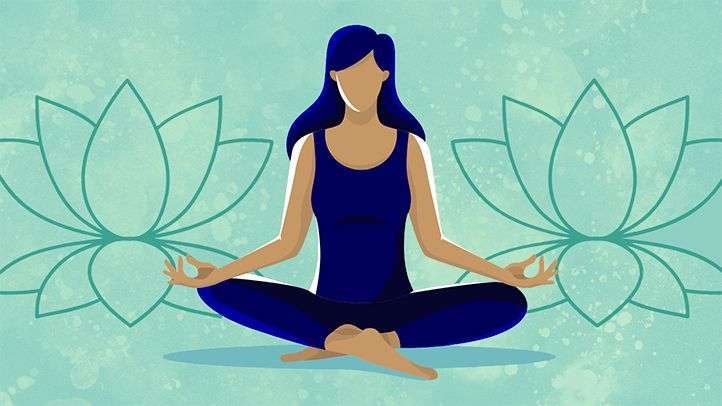Managing Stress and Anxiety through Mindfulness Techniques
According to the statistics https://www.singlecare.com/blog/news/stress-statistics/In today’s fast-paced and demanding world, stress and anxiety have become common challenges for many individuals. Balancing work, personal life, and other responsibilities can often lead to overwhelming feelings that impact both physical and mental health. Mindfulness techniques offer valuable tools for managing stress and anxiety, promoting a sense of calm, focus, and overall well-being. In this article, we will explore how mindfulness can be incorporated into daily life to reduce stress and enhance resilience.
What is Mindfulness?
Mindfulness is a practice rooted in ancient Buddhist traditions that involves paying deliberate attention to the present moment without judgment. It is about being fully aware of our thoughts, emotions, and sensations as they arise, accepting them without resistance, and letting them pass without becoming entangled in them. By practicing mindfulness, we can develop a deeper understanding of ourselves and our experiences, fostering a sense of clarity and emotional balance.
Benefits of Mindfulness for Stress and Anxiety
Numerous studies have demonstrated the positive effects of mindfulness on stress and anxiety reduction. When practiced consistently, mindfulness techniques can:
- Reduce Stress Hormones: Mindfulness helps regulate the body’s stress response by reducing the production of stress hormones like cortisol, leading to a calmer and more composed state.
- Enhance Emotional Regulation: Mindfulness enables individuals to observe their emotions without reacting impulsively. This heightened emotional awareness allows for healthier responses to challenging situations.
- Improve Focus and Concentration: Regular mindfulness practice enhances cognitive functions, leading to improved focus, attention, and memory.
- Promote Relaxation: Engaging in mindfulness exercises induces a relaxation response, easing tension and promoting a state of tranquility.
- Increase Resilience: Mindfulness cultivates the ability to navigate stress and adversity with greater resilience and adaptability.
Mindfulness Techniques for Stress and Anxiety Management
1. Mindful Breathing
One of the simplest mindfulness practices is mindful breathing. Find a quiet place, sit comfortably, and focus your attention on your breath. Feel the sensation of the breath as it enters and leaves your body. If your mind starts to wander, gently bring your focus back to the breath. This exercise can be done for a few minutes whenever you need to center yourself and reduce stress.
2. Body Scan Meditation
Lie down or sit in a comfortable position and bring your attention to different parts of your body one by one. Notice any sensations without judgment. This body scan meditation promotes relaxation and helps release physical tension.
3. Mindful Walking
Take a walk outdoors and bring your awareness to the experience of walking. Feel the ground beneath your feet, notice the movement of your body, and be present in the moment. Walking mindfully can be a rejuvenating practice, especially during stressful workdays.
4. Mindful Eating
Practice mindful eating by savoring each bite of your meal. Pay attention to the taste, texture, and aroma of the food. Eating mindfully allows you to enjoy your meal fully and prevents overeating due to stress or distraction.
5. Journaling and Mindful Reflection
Write down your thoughts and feelings in a journal. Mindful reflection allows you to gain insights into your emotions and thought patterns. It can be a therapeutic practice for processing stress and anxiety.
6. Mindfulness in Daily Activities
Incorporate mindfulness into your daily activities, such as washing dishes, showering, or brushing your teeth. Focus on the sensations, sounds, and movements involved in these tasks, turning them into meditative experiences.
7. Mindfulness Apps and Guided Meditations
Incorporating mindfulness into daily life has become more accessible than ever, thanks to various mindfulness apps and guided meditation platforms. These apps offer a wide range of guided meditation sessions, mindfulness exercises, and relaxation techniques that cater to different needs and preferences. Whether you have a few minutes during a break or need a longer session to unwind, these apps provide a library of resources to support your mindfulness journey.
8. Loving-Kindness Meditation
Loving-kindness meditation, also known as metta meditation, is a practice that involves cultivating feelings of love, compassion, and goodwill towards yourself and others. This practice can help foster a sense of connectedness and empathy, reducing feelings of isolation and anxiety. By directing positive intentions and well-wishes towards yourself and others, you can enhance emotional well-being and build healthier relationships.
9. Mindful Technology Usage
While technology has provided many benefits, it can also contribute to stress and anxiety when overused or mismanaged. Practicing mindful technology usage involves being conscious of how and when you engage with digital devices. Set boundaries for screen time, avoid excessive social media scrolling, and take breaks from technology to give your mind a chance to rest and recharge.
10. Mindfulness in Communication
Mindful communication involves being present and attentive during conversations with others. Instead of multitasking or thinking ahead while someone is speaking, focus on actively listening and responding with genuine interest. Mindful communication fosters better connections, reduces misunderstandings, and promotes empathy and understanding in relationships.
11. Mindfulness-Based Stress Reduction (MBSR)
MBSR is a structured eight-week program that combines mindfulness meditation, gentle yoga, and group discussions to help individuals manage stress and anxiety. The program, developed by Jon Kabat-Zinn, has shown significant benefits for participants in reducing stress-related symptoms and enhancing overall well-being.
12. Mindfulness and Sleep
Mindfulness techniques can be beneficial for improving sleep quality and addressing insomnia. Engaging in a relaxation or mindfulness practice before bedtime can calm the mind and prepare the body for restful sleep. Mindful breathing exercises or guided meditations specifically designed for sleep can be particularly helpful in promoting relaxation and a sense of peace before bedtime.
13. Mindfulness and Gratitude
Practicing gratitude is a form of mindfulness that involves focusing on the positive aspects of life and appreciating the present moment. Cultivating a sense of gratitude can shift the focus away from stress and anxiety, promoting a more positive outlook on life. Consider keeping a gratitude journal, where you write down things you are thankful for each day.
14. Mindful Time Management
Mindful time management involves organizing your day with awareness and intention. Prioritize tasks based on their importance and urgency, and avoid overwhelming yourself with too many commitments. Take breaks throughout the day to reset and recharge, ensuring that you maintain a sense of balance and avoid burnout.
15. Mindfulness in Nature
Spending time in nature can be a powerful way to practice mindfulness. Engage your senses by noticing the sights, sounds, and sensations of the natural world around you. Whether it’s taking a leisurely walk in the park or simply sitting outside and observing the surroundings, connecting with nature can be grounding and calming.
Creating a Mindful Routine for Managing Stress and Anxiety through Mindfulness Techniques
Establishing a regular mindfulness routine is essential for experiencing the full benefits of these techniques. Here are some tips for incorporating mindfulness into your daily life:
- Set aside specific times each day for mindfulness practice, even if it’s just a few minutes.
- Use mindfulness techniques during stressful moments or when you feel overwhelmed.
- Practice self-compassion and avoid judging yourself if your mind wanders during mindfulness exercises.
- Consider joining a mindfulness group or attending guided mindfulness sessions for additional support and encouragement.
Conclusion
Mindfulness techniques offer powerful tools for managing stress and anxiety in today’s fast-paced world. By embracing the present moment with acceptance and non-judgment, individuals can cultivate emotional resilience, enhance focus, and promote overall well-being. Integrating mindfulness into daily life can lead to a greater sense of inner peace and a more balanced approach to handling life’s challenges.
FAQs
- Can mindfulness help with chronic stress and anxiety?
- Yes, mindfulness practices have been shown to be effective in reducing chronic stress and anxiety over time.
- Is mindfulness suitable for everyone?
- Mindfulness can be beneficial for most individuals, but it’s essential to find the right approach and techniques that resonate with each person.
- How long does it take to experience the benefits of mindfulness?
- Some people may notice positive effects after a short period of regular practice, while others may take longer. Consistency is key to experiencing the benefits.
- Can mindfulness replace other forms of mental health treatment?
- Mindfulness can be a helpful complement to other mental health treatments, but it should not be a sole substitute for professional therapy when needed.
- Can children and adolescents practice mindfulness?
- Yes, mindfulness techniques can be adapted for children and adolescents and can provide them with valuable tools for managing stress and emotions.
- Can mindfulness be practiced during busy work hours?
- Yes, mindfulness can be practiced even during busy work hours through brief exercises like mindful breathing or mindful breaks.
- Can mindfulness help with panic attacks and intense anxiety?
- Mindfulness techniques can be beneficial for managing anxiety and panic attacks by helping individuals stay present and regulate their emotional responses.
- Is it necessary to sit cross-legged for mindfulness meditation?
- No, mindfulness meditation can be done in any comfortable position that allows you to be alert and focused.
- Can mindfulness be combined with other relaxation techniques?
- Absolutely, mindfulness can complement other relaxation techniques like progressive muscle relaxation or deep breathing exercises.
- Can mindfulness be taught in schools to help students manage stress?
- Yes, mindfulness programs have been implemented in schools to help students develop emotional resilience and cope with stress.
Do follow us for more https://uniqverses.com/










One thought on “Managing Stress and Anxiety”